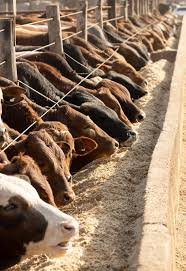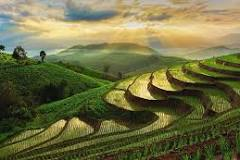ap human geo unit 5: agriculture
1/61
There's no tags or description
Looks like no tags are added yet.
Name | Mastery | Learn | Test | Matching | Spaced |
|---|
No study sessions yet.
62 Terms
township and range systems
rectangular/square system
divided int 1 square mile section
metes and bounds survey system
natural features demarcate; weird shaped plots of land
eastern US
long-lot survey
divide land into narrow parcels stretching stretching from roads, rivers, or canals
system developed in quebec
primary economic activity
jobs closest to the ground (natural resources jobs)
eg: farming, mining, logging, fishing
secondary economic activity
manufacturing: taking raw material+making something
eg: corn → cereal, wood → paper
tertiary economic activity
service sector jobs: jobs that serve others
eg: doctor, lawyer, fast food
quaternary economic activity (part of tertiary)
highly skilled jobs; takes lots of training
eg: engineering, research developement
(part of tertiary) quinary economic activity
highest level of decision making
eg: president, government workers, ceo, etc
1st agriculture revolution (10,000 years ago)
domestication of plants+animals
2nd agriculture revolution (1700-1900)
goes with the industrial revolution
machines, internal combustion, engine, better farming, organic, fertilizer
saw an increase in food production, decrease in farmers
3rd agriculture revolution (in progress)
GMOs, herbicides, pesticides, fungicides, artificial fertilizer
huge increase in food production
green revolution
diffusion of agricultural technologies and practices to less developed areas
impacts of green revolution
increase in food production
places that can’t afford it get left behind
agribusiness
development of business side of farming resulting in branding
increase in connectedness of farming and business (rural+urban blend)
value added
raw agricultural products that have been modified or enhanced to have a higher market value.
eg: strawberry to jam, organic food, gluten-free
4th agriculture revolution
core countries
Farming in warehouses- planting crops in a controlled environment.
substinence agriculture
family/social groups work together
people live on the food they grow
small surplus is traded or sold locally
commercial agriculture
products are for the market
low consumption of food by farmer
capitol intensive
lots of machines and money
MDCs
labor intensive
most work done by hand
little money
LDCs
intensive use of land
small amount of land
labor-intensive
large output per acre
extensive use of land
lots of land
slash and burn, nomadic herding
less labor
small output per acre
shifting cultivation/slash+burn/swidden
steps:
clear forest
burn forest (let ash into soil)
plant/farm on land
can only farm for 2-5 years before the soil goes bad
can’t reuse land for another 15-20 years (unsustainable)
practiced in tropical rainforests( amazon, congo, east indies)
wet rice cultivation
paddy rice farming
tropical region, nutrient rich, with monsoon (hurricane) season
nomadic herding
subsistence agriculture, but moving to commercial
becoming less popular
in arid to sem-arid climate
eat local/farm to table
businesses use regional farms to supply their business
environmental impacts of commercial agriculture
overfishing
changes in environment
overgrazing
deforestation
desertification
farmland being developed
intercropping
2 diff crops planted on the same field
limited space uses this
same/similar latitude=
similar climates and crops
2 types of subsistence farming that take up the most land
shifting cultivation
nomadic herding
feedlots

intensive
cheap to run, higher profits
cash crop
crop that is grown for profit and to meet some luxury
eg: coffee and tobacco
mixed/general farming
crops and livestock
crop rotation
practice of rotating use of different fields from crop to crop each year to avoid exhausting the soil
monoculture
cultivation of only one single crop in a large land area
double cropping
growing two crops per growing season to double the harvest
triple cropping
growing of three crops per growing season to triple the harvest
winter wheat
type of wheat crop that is planted in the late fall and harvested in the summer
plantation agriculture
the production of one or more usually cash crops on a large plot of land
most common in (semi) tropical climate and in periphery countries
luxury crop
crop that is grown to serve some purpose other than sustaining human life
eg: coffee, tobacco, tea
market gardening/truck farming
commercial gardening and fruit/vegetable/horticulture farming
comparative advantage
the ability of an individual, company, or country to produce a good or service at a lower opportunity cost than other producers
food desert
places with limited acces to fresh food
fair trade
promote sustainable development by providing farmers with direct access to international markets
greenbelt
ring of land maintained as parks, agriculture, or other types of open space to limit the sprawl of an urban area
aquaculture
cultivation or farming (in controlled conditions) of aquatic species, such as fish
blue revolution
emergence of aquaculture as an important and highly productive agricultural activity

terrace farming
building a series of steps or flat land for farming on the sides of hills or mountains
deforestation
destruction of forest or forested areas by human or natural means
draining wetlands
clearing water from wetlands and swamps to make land accessible to farmers
genetically modified organisms (GMOs)
organisms that genetic makeup has been altered to encourage some positive traits and eliminate some negative traits
genetically engineered
genetic makeup has been altered
biotechnology
use of living organisms or their components, such as cells and proteins, to develop products and processes that enhance human life
desertification
the process by which previously fertile lands become arid and unusable for farming
soil salinization
occurs when soil in an arid climate has been made available for agricultural production using irrigation
fallow
land that is left unsown in order to restore its fertility
von thunen 1st layer
market
von thunen 1st ring
Horticulture and dairying
Milk products, fruits, and vegetables have short shelf lives so need to be located close to city
Difficult to transport
von thunen 2nd ring
timber/wood/forestry
harder to transport so needs to be close to the market
von thunen 3rd ring
grain and mixed crops
large scale farms that allow for growing large
amounts of food
usually lighter but bulkier so more difficult to transport than animals
von thunen fourth ring
ranching and livestock
large areas for farm animals.
animals can walk themselves to market